The Condo Edition

Where have all the condos gone?
There have been three recent stories in The Columbus Dispatch on the topic of condos (1, 2, 3). This attention, however, is rare. Despite all the talk of housing affordability, there's usually not much focus on this more affordable end of the for-sale market. Today's edition will offer a portrait of the condo market, discuss some important benefits (and a few drawbacks) of condos, and end with some detailed data about condos in Franklin County. Building more housing of all shapes and sizes for all kinds of households includes this key piece of the housing puzzle.
In the scheme of housing, condos are very new
They were first legally recognized in the U.S. in 1961—in Utah of all places. Usually acknowledged as an export from Latin America, and potentially from ancient Rome, the condo is a way of legally dividing ownership on the same piece of land. This is in opposition to the conventional detached single-family structure, which sits on an its own individual parcel. In that case, there's no sharing involved— nothing 'in common.' Condos, however, have at least some shared assets and responsibilities. At a conceptual level, this "sharing" is one reason why condos are typically less expensive than detached single-family homes, while still offer equity-building potential for homebuyers.

Condos as missing middle housing
Even though condos aren't technically a style of building, the legal structure is particularly well-suited to some architectural typologies. Refer to the figure above, an illustration of housing types at various scales and densities created by Opticos Design. In the "missing middle" zone you'll notice many of the multi-family structure types present in Columbus neighborhoods. Think about the dozens of fourplexes along King Avenue west of North Star Avenue, and of course the ubiquitous duplexes throughout the city. The diagram above highlights what most cities have not built for many decades. Instead, we've generally seen more detached single-family structures (on the left) and more large multifamily buildings (on the right). Hence, the structures in the middle section of the diagram are largely "missing" from our housing stock.
Again, while condos aren't technically a style of building, many of the housing types in the missing middle would perform well as condos. Consider the classic Columbus rowhouse, present throughout urban areas like the University District, Old North, and the South Side. Each rowhouse can be a condo unit, while a condo association exists to take care of maintenance and repairs that affect the entire structure. Rules can be put into place that restrict the ability of condo owners to do certain things with their units, including rent them out to tenants or use them as ghost hotels (short-term rentals). For many households, this rowhouse typology may be an excellent entry point into homeownership. The seamless integration of rowhouses and detached single-family structures occurs—and is even a defining characteristic—of pre-war Columbus neighborhoods. Embracing this legacy of diverse housing types side-by-side would allow for increased density in suburban contexts while retaining equity-building opportunities; something to keep in mind for the second phase of Zone In.
Nationally, condo production is near historic lows
For a society that prizes homeownership, attached for-sale housing is hard to find. The graph below demonstrates the significant drop in the construction of for-sale multifamily housing (i.e. condos) since about 2008 (Urban Institute, 2023).
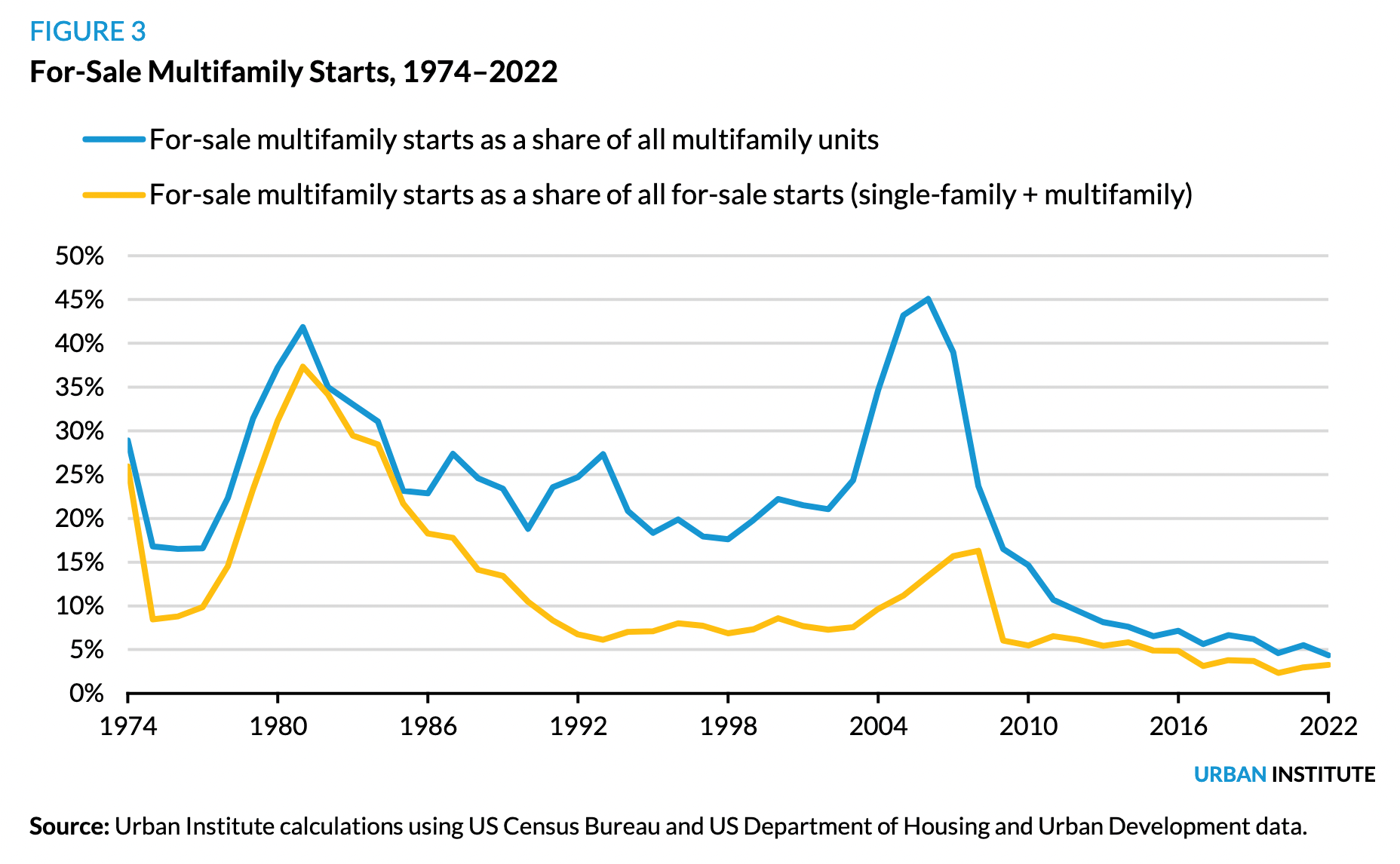
This trend is unfortunate, since the same report also shows condos are especially important for younger and first-time homebuyers.
Maybe people just don't want condos?
One might assume that because few condos are being built, that consumers simply aren't demanding this form of housing. That assumption would be based on a strong faith that developers know exactly what all of us want. Experience from Seattle, at least, demonstrates this to be untrue. The city has very few condos being built, yet in 2017 one project pre-sold 75% of its condos (to be finished in 2019) in just two weeks! So few condos are being built that it's hard to meaningfully assess how buyers really feel about them. After all, if you don't have the opportunity to purchase something, how can the market be sure it's not wanted?
Data also backs up this assertion. Consumer preference data from the National Association of Homebuilders shows that a majority of respondents—55%—would prefer to live in an attached townhome or apartment, compared to 45% who indicated they would prefer a detached single-family home. There's clearly a market for multifamily housing, including for sale products. Published by the Sightline Institute, a comparative look at Seattle and Vancouver demonstrates the point. Vancouver's almost exclusively been building condos, while Seattle's almost exclusively been building apartments. Are consumers in these two cities really that different? The results are largely due to the regulatory environment, not some innate understanding of how people truly want to live.
What are some of the reasons condo production is low?
Again, the raw data showing that condos aren't getting built doesn't necessarily mean that people are not interested in buying condos. It may just be that the attraction of building rentals is stronger for developers than building condos. In industry discourse, there are three reasons that have been identified as reducing the attractiveness of building condos.
(1) Federal tax treatment favors multifamily rentals
Developers receive the benefit of accelerated depreciation when they construct rentals, while condos profits are taxed as ordinary income. This passage from a recent opinion piece in The Washington Post explains the issue:
"When developers build homes to sell to individual families, those profits are treated as 'ordinary income'— taxed at rates as high as 37 percent. In contrast, profits from building and renting out apartments are often taxed at long-term capital gains rates of just 15 percent to 20 percent, so long as the property is held for a year or more." (Bear, 2025)
(2) Increasing insurance costs
In the midst of climate-change related disasters and the 2023 collapse of a condo tower in Miami, the cost of insuring condos is rising precipitously. Industry experts have identified this as another reason that condos are experiencing a current slump. Recent reforms, particularly in Florida, have also changed the regulatory landscape.
(3) Risk of litigation
While each state has different laws, the owners of condos have the right to sue condo developers for a number of years after they're constructed for building defects. The housing lobby is working to reign in the ability of condo owners to bring suit against builders, claiming that such reform would increase the supply of condos and access to homeownership for people at lower ends of the income spectrum.

Still, condos can come in many shapes and sizes
For many in Central Ohio, the word might first conjure images of attached two-story townhouses. Another type is the high-rise, like Waterford Tower or the towers at North Bank Park. But condos can also be in rowhouses, duplexes, and retrofitted warehouse buildings like Buggyworks. Condos are a legal ownership structure, not a style of building or architecture. Here are some local examples you might recognize:
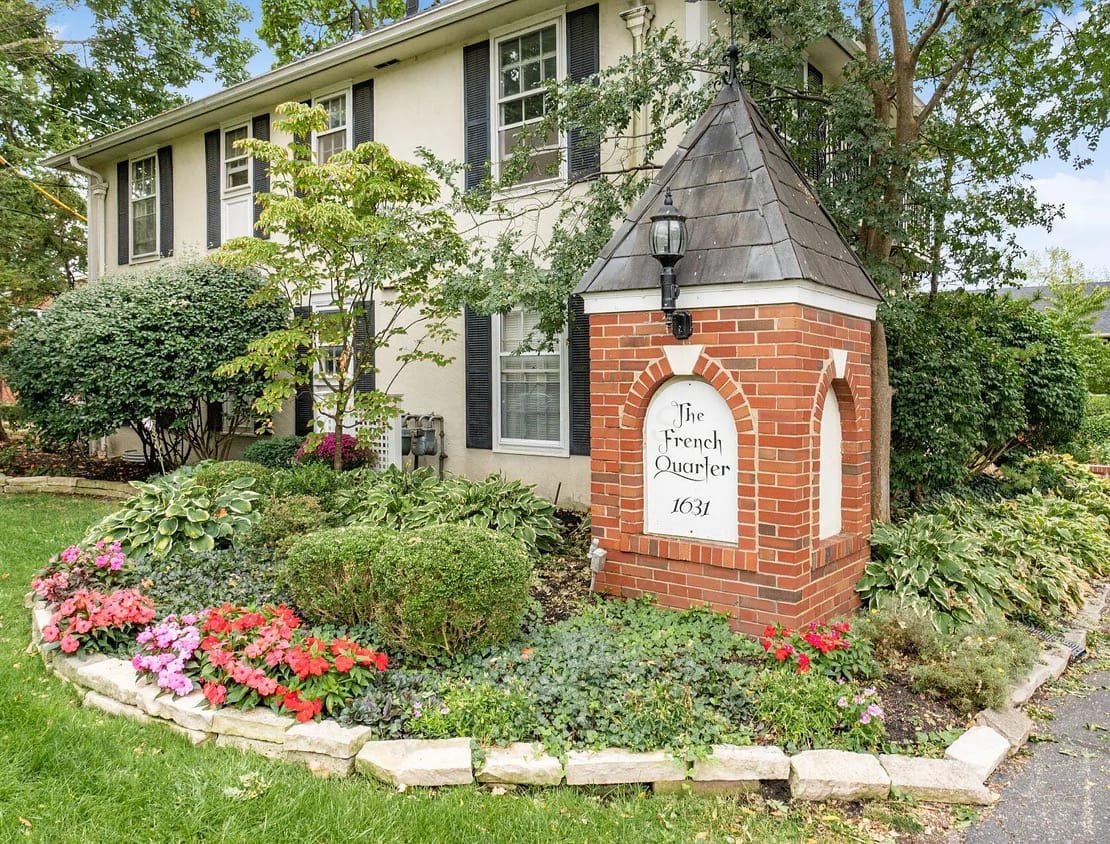
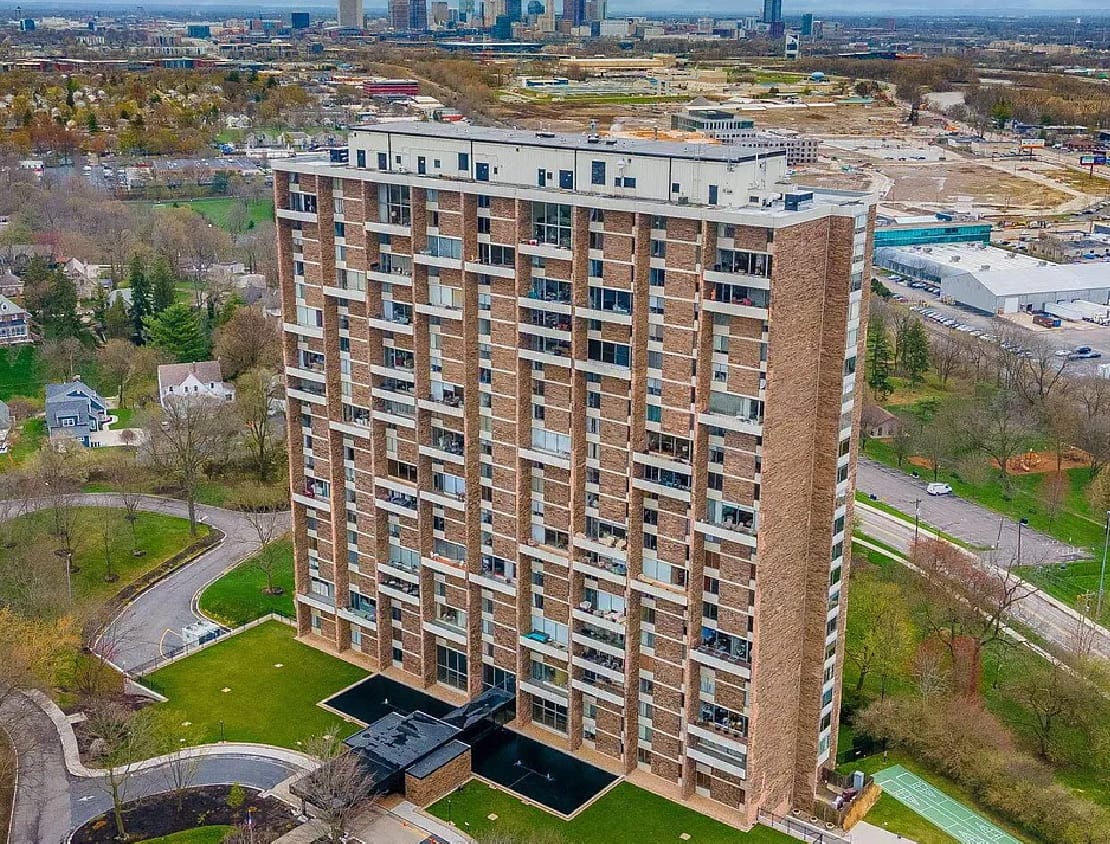
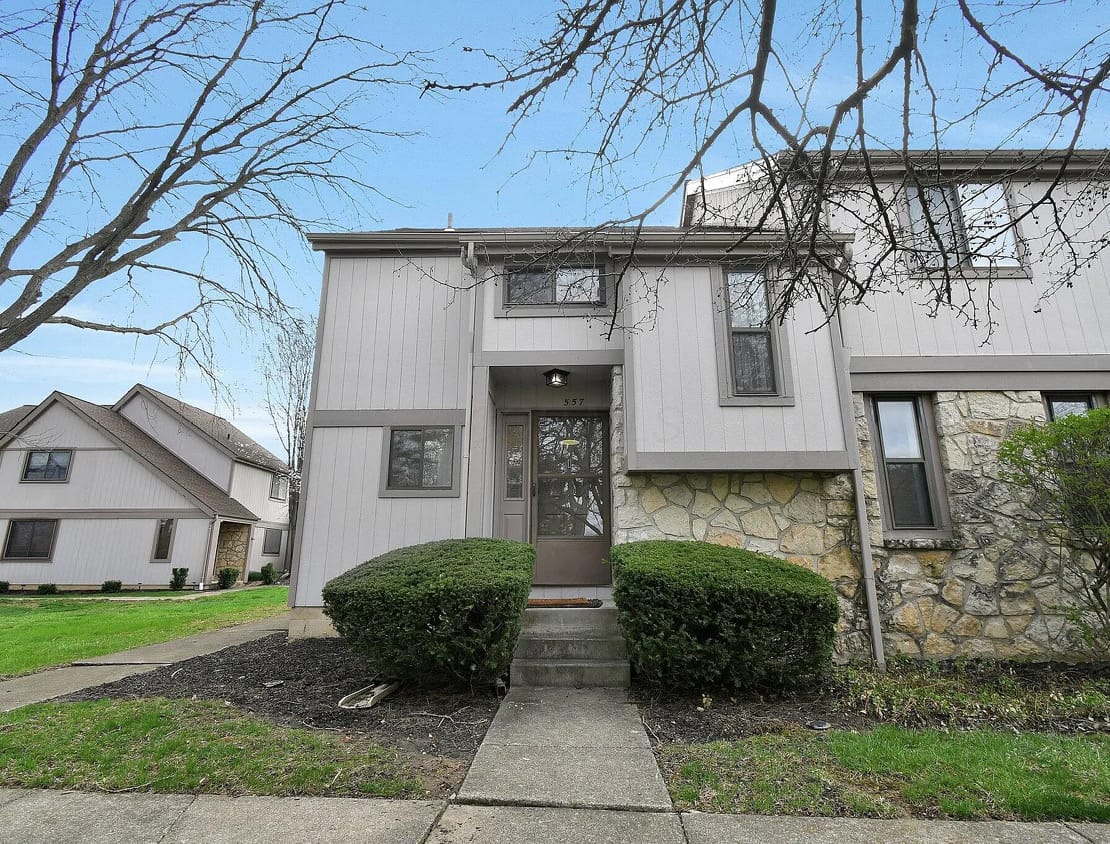

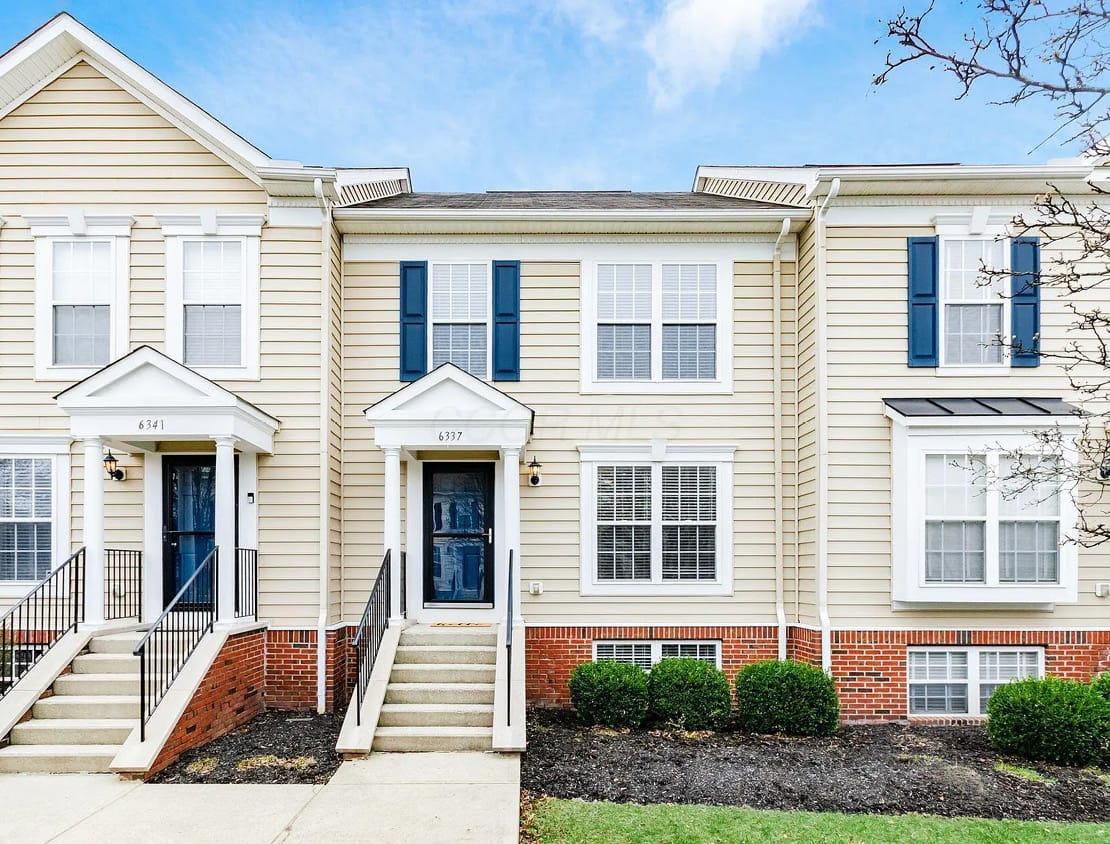
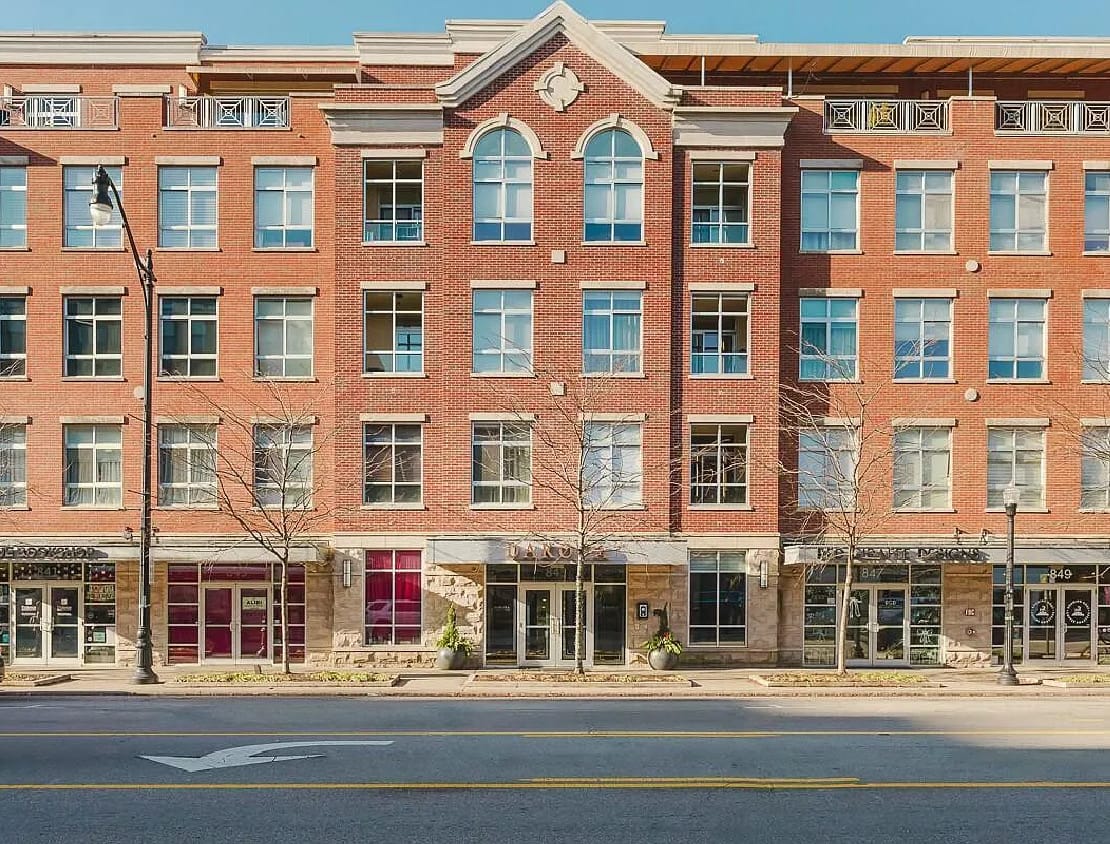
Condos come in many shapes and sizes throughout Central Ohio. (Source: Zillow, March 2025)
Condos have been in the news lately, like Thrive's decision to switch a Harrison West project from condos to apartments—angering some vocal neighbors.
After receiving public approvals to construct condos, they now claim they can't do so profitably and must transition to more apartments instead. Just a few days later, Kaufman Development Corp. announced their LeVeque Tower apartments will be converted and sold as condos.
While the purchase price of a condo, on average, is below that of detached single-family home, there are strings attached.
As you might have guessed, these strings are the mandatory monthly contributions to condo associations. The association dues for the listed condos at LeVeque Tower, for example, range from $608 to $924 per month. A brief scan of some condos on the local market show a wide range of monthly fees. These fees go toward long-term savings that support maintenance of the entire structure, not toward the owner's mortgage or equity. When looking at condos, it's important to realize the sticker price doesn't reflect the monthly association fees.

Where are condos in Franklin County?
This heat map shows the concentration of parcels coded as condominiums by the Franklin County Auditor in March 2025. The biggest concentrations are in Northwest Columbus, downtown, and other suburban locations outside of I-270. When considering this data, it is important to note that parcels coded as condos may not have been constructed as condos. Instead, many were converted to condos. Again, the condominium is a legal property status, not a type of structure or building.

When were condos in Franklin County built?
Consistent with national trends discussed above, the construction of condos in Franklin County has been declining in recent years. Looking at data since 1980, there's a spike just before 2000 and an overall increase before the Global Financial Crisis of 2007-2008. Since then, they've been in significant decline.
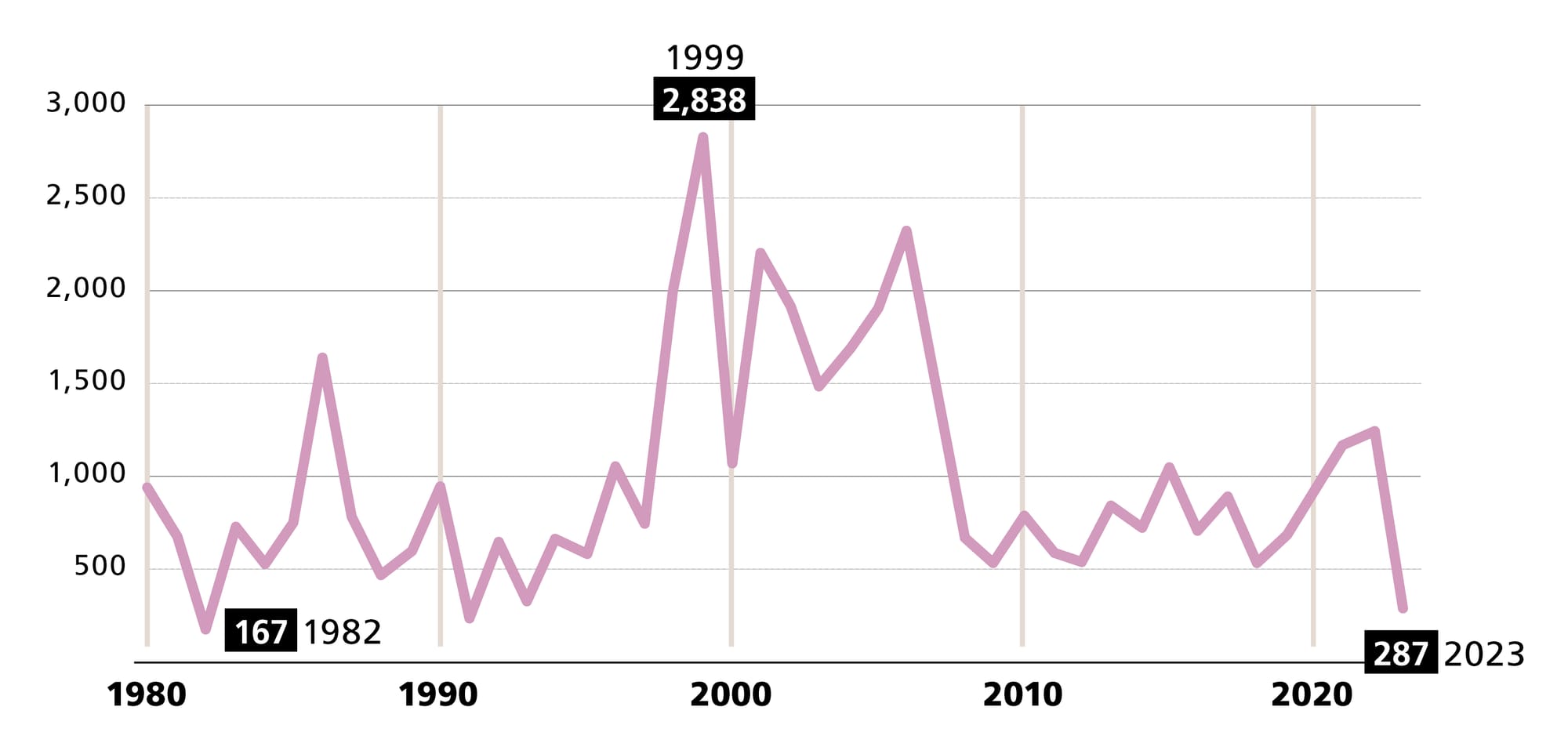
Size, price, and occupancy status
Considering the 56,087 parcels coded as condos in Franklin County, the average unit size in March 2025 was 1,162 sq. ft. This is below the average size of the 288,162 parcels coded as one-family dwellings (code 510), which was 1,653 sq. ft. Overall, it's usually a safe assumption that condos are smaller on average than most new detached single-family homes. This is one of the reasons they can be more affordable, too. Among parcels coded as condos with transfer dates between January 2024 and March 2025, the median sale price was $255,250 (excluding outliers). This is below the median sale price of a home in Franklin County for February 2025, which was $294,900.
One of the more surprising insights revealed by this analysis is that most condos in Franklin County are being used as rental housing. Just 45% of parcels coded as condos are also receiving the owner-occupied tax credit.

In conclusion: 'Confusing demand with desire'
How do developers know exactly if people in Central Ohio would prefer three-story walkups with surface parking to an eight-story condo building with limited parking? Often, their decisions come down to replicating what they (and the banks) already know works. This helps them convince banks to lend them money. Banks want to see comps (comparable real estate data) that demonstrate the profitability of a proposed project. Yet, this system of comps and financing is heavily reliant upon reproducing recently completed buildings—to the detriment of innovation in the housing sector. As one municipal planner explained to interviewers, developers can confuse "demand with desire" (Brill and Durrant, 2021, p. 1152). Just because people move into available housing doesn't mean they necessarily love where they live. Like all of us, they just need housing they can afford.
As we move toward the next phase of Zone In for the city of Columbus, keep in mind how condos can be allowed and encouraged.
Can local policy help counteract some of the national trends incentivizing investment in rentals? After decades of concentrating on detached single-family homes, our region needs to address the skewed availability of housing products. If we want to give people a shot at homeownership, build traditional walkable communities, and save energy, then attached housing is our best bet.
🔗 Links for your enjoyment
Local + Regional 🏠
- Columbus creating vacant, foreclosed home registries to address dangerous eyesores
21 April 2025, The Columbus Dispatch - Can $500 change a life? Central Ohio uses Universal Basic Income concepts to target poverty
20 April 2025, The Columbus Dispatch - Columbus overhauled its zoning policies 9 months ago. Where are all the big projects
18 April 2025, The Columbus Dispatch - Whitehall City Council approves tax breaks for controversial Fairway Cliffs townhomes
16 April 2025, The Columbus Dispatch - Spaghetti Warehouse replacement apartment complex to include bar, homage to site's past
15 April 2025, The Columbus Dispatch - LeVeque Tower apartments to be sold as condominiums, ranging from $240,000 to $650,000
14 April 2025, The Columbus Dispatch - Neighbors push back after Columbus developer seeks switch from condos to apartments
12 April 2025, The Columbus Dispatch - Nationwide to evaluate empty Central Ohio offices for housing potential
4 April 2025, Columbus Business First - Central Ohio Community Land Trust unveils Kohr Place, a 14-home development in Linden
4 April 2025, WSYX - Home prices could increase by $10k in Ohio with potential tariffs on lumber
2 April 2025, WSYX - More than 250 apartments, restaurant space proposed in latest Trabue Road development
31 March 2025, WBNS - As Columbus' economy booms, here's the biggest thing central Ohioans are worried about (housing affordability!)
27 March 2025, The Columbus Dispatch - Central Ohio home inventory at highest level for February since 2017
20 March 2025, Columbus Business First - Infamous properties Latitude Five25, Wedgewood could transform in historic housing deal
20 March 2025, The Columbus Dispatch - High-rise with 16 stories near Ohio State aims to benefit from Columbus' new zoning code
19 March 2025, The Columbus Dispatch - Lack of housing leads to higher rents, home prices in central Ohio
19 March 2025, WBNS - Home prices surge in Columbus amid population growth challenges
19 March 2025, WBNS - By the Numbers: Central Ohio Population Growing, More Housing Needed
18 March 2025, Columbus Underground - Editor's Note: Housing Affordability in Columbus Is Critical to Us All
17 March 2025, Columbus Monthly - Columbus named the second-fastest growing U.S. city in 2024, highlighting housing needs
14 March 2025, WCMH - DOGE, HUD sued after fair housing funding slashed, crippling central Ohio nonprofit
14 March 2025, The Columbus Dispatch - Columbus' proposed Zone In update may allow mixed-use development in Northland. See where.
11 March 2025, The Columbus Dispatch - Affordable Housing Alliance of Central Ohio survey finds major support for pro-housing policies
4 February 2025, WOSU
National + Beyond 🌎
- 60,000 Americans to lose their rental assistance and risk eviction unless Congress acts
21 April 2025, Associated Press - Rent Prices Keep Rising Amid Inflation, Low Inventory
17 April 2025, NerdWallet - US single-family housing starts tumble to an eight-month low in March
17 April 2025, Reuters - 3 Ways Tariffs Could Affect The Housing Market
12 April 2025, Investopedia - A National Public Housing Museum opens
10 April 2025, NPR - Will the U.S. Housing Crisis Be Exploited for a Massive Public Lands Sell-Off?
10 April 2025, Center for American Progress - Americans Have $35 Trillion in Housing Wealth—and It’s Costing Them
7 April 2025, Wall Street Journal - For these seniors, DOGE's affordable housing pause means suffering longer without AC
5 April 2025, NPR - Barcelona Becomes Ground Zero for Europe’s Housing Dilemma
31 March 2025, The New York Times - Real Estate Fund Exceeds $2.5 Billion for Affordable Housing
31 March 2025, The New York Times
Why does this email look different?
We finally made the jump from Substack! After months of research, free trials, and deliberation, we selected Ghost: an open source, independent platform funded 100% by its users—not investors. With Ghost, we own our content and our subscriber list (your email address). While no platform is perfect, there's a reason Substack is free. Just like any tech company (i.e. Google, Meta), the monetized product is often user data. To safeguard your data and uphold our values, we've chosen to opt-out of that toxic ecosystem for an independent alternative.





